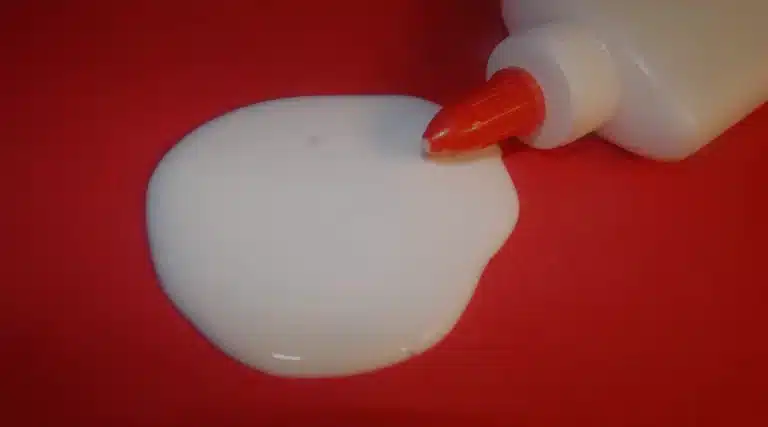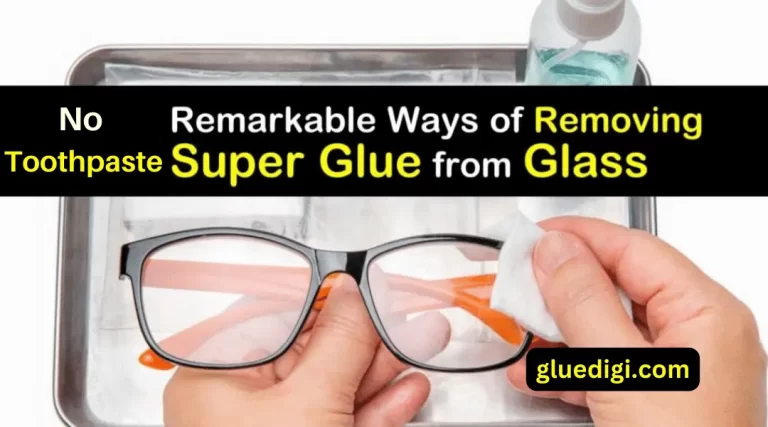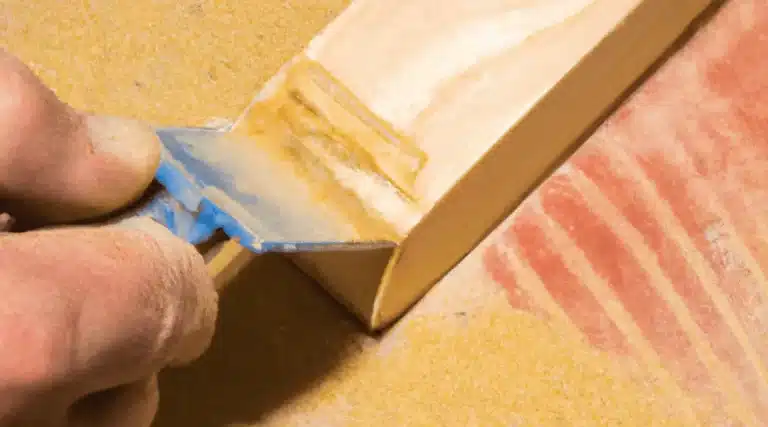Nail glue is a common adhesive that is used to attach artificial nails or other embellishments to natural nails. While it can be useful for creating beautiful nail designs, removing excess glue from the skin or nails can be challenging and time-consuming.
In some cases, individuals may accidentally get nail glue on their skin while applying artificial nails or performing other manicure tasks. When this occurs, it is important to remove the glue as quickly and safely as possible.
Fortunately, there are several methods for quickly removing nail glue from the skin and nails without causing damage or irritation. These methods include soaking the affected area in warm soapy water, using acetone or nail polish remover, applying petroleum jelly to loosen the glue, and using a commercial nail glue remover.
By following these tips and techniques for safe removal of nail glue, individuals can avoid potential injury or discomfort associated with improper removal methods.
Key Takeaways
- Soak affected area in warm soapy water to weaken adhesive properties of glue and facilitate detachment from skin or nails.
- Acetone or nail polish remover can break down tough nail adhesives, but caution should be exercised when handling as it can be harsh on skin.
- Placing a cotton ball soaked in acetone on affected area and covering with plastic wrap or a band-aid helps dissolve adhesive residue.
- Consider using double-sided tape or adhesive tabs instead of nail glue for attaching artificial nails to avoid potential risks associated with certain products.
Soak the Affected Area in Warm, Soapy Water
The most effective method for removing nail glue quickly is to immerse the affected area in warm, soapy water.
This process can weaken the adhesive properties of the glue and facilitate its detachment from the skin or nails. The benefits of using warm water are that it helps to soften and loosen the glue, making it easier to remove without causing any damage to your skin or nails.
Additionally, there are several DIY nail glue removal hacks you can use alongside this method, such as using a toothbrush to gently scrub away any residual glue. However, if soaking your nails in warm water doesn’t work, you can try using acetone-based nail polish remover instead.
While this method may be more effective at breaking down tough nail adhesives, it’s also important to exercise caution when handling acetone products as they can be harsh on your skin and cause irritation if not used properly.
Use Acetone
The use of acetone is another effective method to remove nail glue.
To do this, apply a small amount of acetone on a cotton ball and place it on the affected area.
Cover the cotton ball with plastic wrap or a band-aid and wait for 15-20 minutes before gently peeling off the glue.
This method is particularly useful for stubborn nail glues that have been difficult to remove through other means.
Apply a Small Amount on a Cotton Ball
By dabbing a cotton ball with a small amount of nail polish remover, one can effectively dissolve and remove stubborn nail glue in no time. However, for those who do not have access to acetone or would like to try alternative methods, there are other options available.
One such alternative is using vinegar mixed with warm water, which can be applied to the affected area with a cotton ball. Additionally, lemon juice and baking soda can be combined to create a paste that can be spread onto the nails and left for several minutes before being rinsed off.
Another DIY option involves mixing coconut oil and honey together and applying it to the nails for 10-15 minutes before wiping it off with a warm cloth. Lastly, some individuals prefer using petroleum jelly as an easy-to-find solution that involves coating the skin around the nails in petroleum jelly and leaving it on for a few hours before washing it off.
Once any of these methods have been used, place the cotton ball on the affected area to allow further dissolving of the glue.
Place the Cotton Ball on the Affected Area
Placing a cotton ball on the affected area allows for further dissolving of the adhesive residue. This method is particularly useful when dealing with stubborn nail glue that refuses to come off easily. However, it’s important to note that alternative methods may be necessary in some cases.
Safety precautions should also be taken into consideration when using this approach. For instance, avoid pressing too hard against the skin as this could cause irritation or injury. Additionally, always make sure that you’re using a reputable brand of acetone or nail polish remover to minimize the risk of adverse reactions.
Once you’ve placed the cotton ball on the affected area, cover it with plastic wrap or a band-aid to prevent it from falling off and allow it to work its magic before proceeding with further removal techniques.
Cover with Plastic Wrap or a Band-Aid
To protect the affected area and allow for optimal dissolving of the adhesive residue, it is recommended to cover it with plastic wrap or a band-aid after placing a cotton ball soaked in acetone. When using plastic wrap, it can create a seal around the nail, which can prevent any air from getting in and causing the acetone to evaporate quickly. This, in turn, allows the acetone to penetrate deeper into the nail glue and dissolve it more effectively. Additionally, band-aids have been found to be effective in removing nail glue because they trap heat and moisture against the skin, which helps to speed up the chemical reaction between acetone and nail glue. The science behind this is that increasing temperature increases molecular motion which speeds up reactions as more molecules collide with each other leading to faster reaction rates. By incorporating these techniques into your routine, you can remove nail glue safely and efficiently without causing damage or pain. Wait for 15-20 minutes before removing everything carefully to avoid any possible irritation or discomfort on your skin.
Wait for 15-20 Minutes
To continue our discussion on removing nail glue quickly, another method to consider is waiting for 15-20 minutes after covering the affected area with plastic wrap or a band-aid. This technique offers several benefits, including giving the remover solution enough time to penetrate and dissolve the glue fully.
While waiting, you can take advantage of this time by doing other activities that do not require excessive hand movement or contact with water. Here are some suggested alternatives:
(1) read a book or watch your favorite show;
(2) meditate or practice deep breathing exercises to help you relax;
(3) catch up on your emails or social media accounts; and
(4) prepare a healthy snack or drink.
It’s important to note that this technique may require patience and perseverance, but it’s worth considering because it reduces the risk of damaging your nails or cuticles from soaking them in harsh chemicals repeatedly. Additionally, if you have sensitive skin, waiting may be more comfortable than exposing yourself to potentially irritating solutions.
Once the waiting period is over, we’ll move onto our next step – gently peeling off the glue without causing any harm – which we’ll cover in our subsequent section.
Gently Peel off the Glue
The next step involves delicately removing the adhesive from your nails without causing any damage.
When it comes to gel nails, it’s important to take care when removing the glue, as you don’t want to accidentally peel off layers of your own nail in the process.
One way to avoid mishaps when applying nail glue is by using a small amount and avoiding contact with skin and cuticles.
But if you find yourself needing to remove excess glue after application, gently peel off the glue starting from one corner of the affected area and working your way across. This should be done slowly and patiently, so as not to cause any harm or discomfort.
It’s also worth noting that taking steps like moisturizing your cuticles regularly can help prevent future issues with nail glue sticking where it shouldn’t.
In our next section, we’ll explore how trying out nail polish remover could be another solution for quick removal of unwanted adhesive residue.
Try Nail Polish Remover
Nail polish remover is a commonly used solution for removing nail glue quickly. However, it’s important to note that not all types of nail polish remover will work effectively on removing the adhesive.
Here are four things to keep in mind when using this alternative method:
1) Look for acetone-based nail polish removers as they are more effective in breaking down the chemical bonds in the glue;
2) Apply a small amount of the remover onto a cotton ball or pad and gently rub it onto the affected area, being careful not to soak the surrounding skin;
3) Avoid using too much pressure or scrubbing too hard as this can damage your nails;
4) Rinse off any residue with warm water and moisturize your hands afterwards as nail polish remover can be drying to your skin.
It’s important to take safety precautions when working with any chemicals, including nail polish remover. If you experience any adverse reactions such as skin irritation or redness, stop immediately and seek medical attention if necessary.
To continue with another alternative method for removing nail glue, try using petroleum jelly instead.
Use Petroleum Jelly
Petroleum jelly can be utilized as an alternative method for eliminating adhesive residue from the skin. It is a versatile product that has various uses in nail care, including moisturizing cuticles and preventing the spread of polish when painting nails.
When it comes to removing nail glue, petroleum jelly is effective because it helps dissolve the adhesive and lubricates the skin, making it easy to remove any residue left behind. Comparing various oil-based products for removing nail glue, petroleum jelly stands out due to its affordability and availability.
However, it may take longer than other commercial removers to completely eliminate stubborn glue stains from your skin or nails. Nevertheless, using petroleum jelly is a safe and affordable option that works well for most people.
As an additional point of information on how to remove nail glue quickly, you can use a commercial nail glue remover instead of relying solely on natural remedies like petroleum jelly or acetone-based products.
Use a Commercial Nail Glue Remover
When it comes to removing nail glue, one option is to use a commercial nail glue remover.
It’s important to look for a product that is specifically designed for this purpose, as other solvents may not be effective or could damage the nails.
Carefully follow the instructions provided with the product and use caution, as some removers can be harsh on the skin.
Look for a Product Specifically Designed for Nail Glue
One effective approach to removing nail glue quickly is seeking out a product that has been specifically formulated for this task. There are numerous benefits of using a specialized product, including the fact that it is designed to dissolve and break down nail glue without damaging the surrounding skin or nails. These products are typically available at most drugstores or beauty supply stores and come in various forms such as liquids, gels, or sprays. However, it is important to exercise caution when using these products as they can contain harsh chemicals that may cause irritation or allergic reactions. Precautions when using nail glue remover include wearing gloves to protect your hands, working in a well-ventilated area, and avoiding contact with eyes or mouth. Additionally, it’s essential to follow the instructions on the package carefully to ensure safe and effective use. By taking these precautions and utilizing a specialized product designed for nail glue removal, you can quickly and safely remove any unwanted residue from your nails without causing damage or harm. Transitioning into the subsequent section about following instructions on the package carefully will help ensure successful results.
Follow the Instructions on the Package Carefully
To ensure safe and effective removal of nail glue residue, it is imperative to carefully follow the instructions provided on the product packaging.
When using a product specifically designed for removing nail glue, there are precautions that should be taken to avoid damaging the nails or skin.
Firstly, it is important to keep the product away from open flames or heat sources as they can be flammable.
Secondly, apply only a small amount of the product onto a cotton ball or pad and gently rub it over the affected area. It is crucial not to use excessive force or scrubbing motion to remove the glue as this can cause damage to the nails and surrounding skin.
Additionally, if you have sensitive skin or allergies, always perform a patch test on a small area before applying it directly onto your skin.
Lastly, if you prefer an alternative to nail glue for attaching artificial nails, consider using double-sided tape or adhesive tabs instead. Use with caution as some products can be harsh on the skin and may cause irritation if not used correctly.
Use with Caution, as Some Products Can Be Harsh on the Skin
Caution must be exercised when using products for removing nail glue residue, as some can contain harsh chemicals that may cause skin irritation and discomfort. It is important to prioritize skin safety when selecting a product for this purpose. Additionally, exploring alternative methods beyond chemical solutions may also be beneficial. For example, soaking the affected area in warm water or using olive oil or coconut oil to gently dissolve the glue can be effective and less harsh on the skin. Ultimately, being mindful of the potential risks associated with certain products and seeking out gentler alternatives can help ensure a safe and comfortable experience when removing nail glue.
Conclusion
Nail glue can be a stubborn adhesive to remove from your skin or nails. There are several methods you can try to quickly and effectively remove nail glue.
One method is to soak the affected area in warm, soapy water for several minutes. This can help loosen the glue and make it easier to peel off.
Another effective method is using acetone, which can dissolve the glue. You can also try using nail polish remover that contains acetone as an active ingredient.
If these methods do not work, you may want to consider using petroleum jelly or a commercial nail glue remover specifically designed for this purpose.
It is important to use caution when attempting any of these removal methods and follow proper safety guidelines.
In conclusion, removing nail glue does not have to be a difficult task if you know what methods are available and how to properly use them. Whether you choose warm water, acetone-based products or commercial removers, following proper safety precautions will ensure that your skin stays healthy and free from irritation. Remember that patience and care are key when removing nail glue, so take your time and follow the steps carefully for best results.






